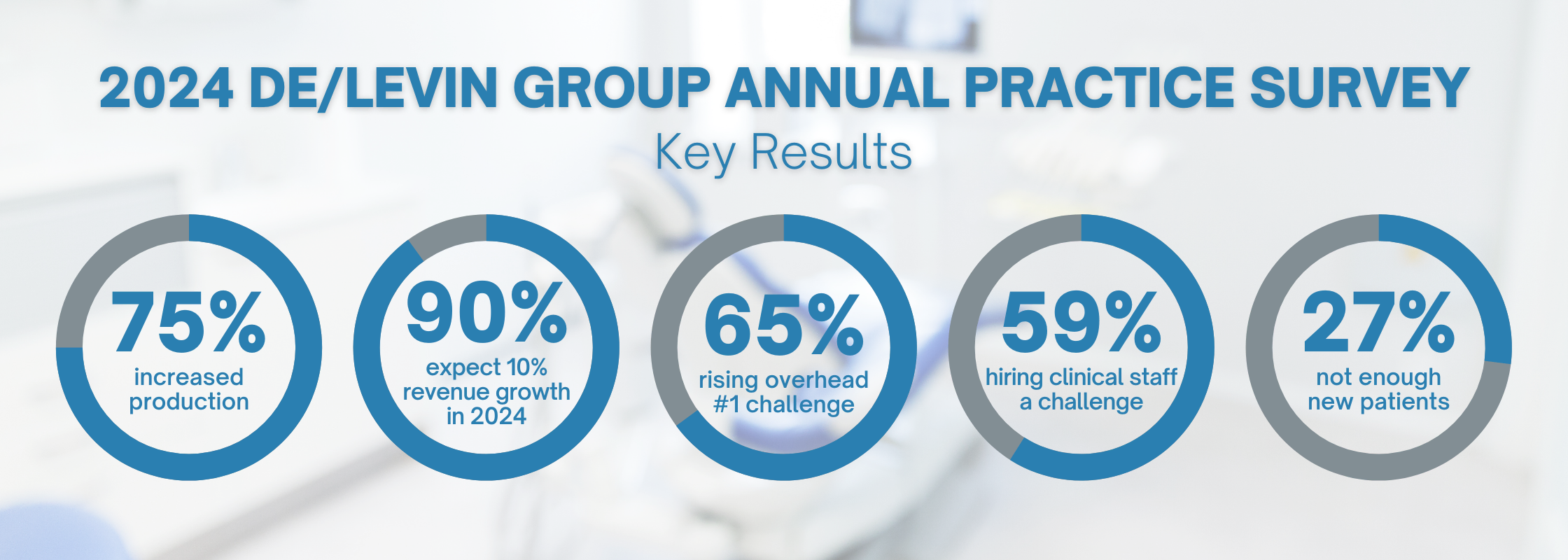A recent survey conducted by Dental Economics and the Levin Group points to several implications for dental practices over the next few months, which are mostly positive.
The 18th Annual DE/Levin Group Practice Survey, conducted earlier in 2024, reports that dental practices have stabilized post-pandemic, with 75% of practices experiencing increased production. Most practices reported an increase in production of 6.7%. Less than 5% of practices reported that they increased production by greater than 25%.

Dentists appear fairly bullish for the remainder of 2024, with 9 out of 10 respondents saying they expect revenue to grow 10% or more compared with 2023.
Despite the rosy outlook, respondents did identify some challenges: 65% named rising overhead as their #1 challenge while 59% cited the ability to hire clinical staff as a challenge. Meanwhile, 55% of practices named declining insurance reimbursements, and 27% said “not enough new patients” are challenges.
As part of its report, Levin Group recommends that “practices should focus on improving… efficiency” if they are feeling the squeeze from staffing shortages, declining insurance reimbursement, and new patient acquisition and retention.
Practices looking to boost efficiency while making further gains in production to address these challenges should consider integrating the PerioLase® MVP-7™ and the LANAP®, LAPIP™, and other protocols.
More production, more profits – By accelerating treatment and recovery time for patients with periodontal disease or peri-implantitis, practices can see more patients daily, significantly increasing production per hour and overall revenue.
Higher patient acceptance – Offering advanced, state-of-the-art treatments helps attract new patients seeking the latest dental care innovations. LANAP-trained clinicians report that 91% of patients are more likely to accept LANAP treatment and refer others for treatment.
Low material costs – LANAP-trained clinicians save on material costs and consumables, since no biologics, exogenous growth factors, bone grafts, foreign membranes, scaffolds, or stitches are required.
Efficient, easy-to-use workflow – The LANAP protocol and other procedures require minimal staff assistance. In fact, complementary technology such as the Isolite dental isolation systems has been shown to help eliminate the need for a second pair of hands when working on patients.
By integrating the PerioLase® MVP-7™ and the LANAP®, LAPIP™, and other protocols into their practices, dental professionals can effectively address a number of these key challenges while improving patient satisfaction and retention, as well as maintaining a competitive edge in the market.



